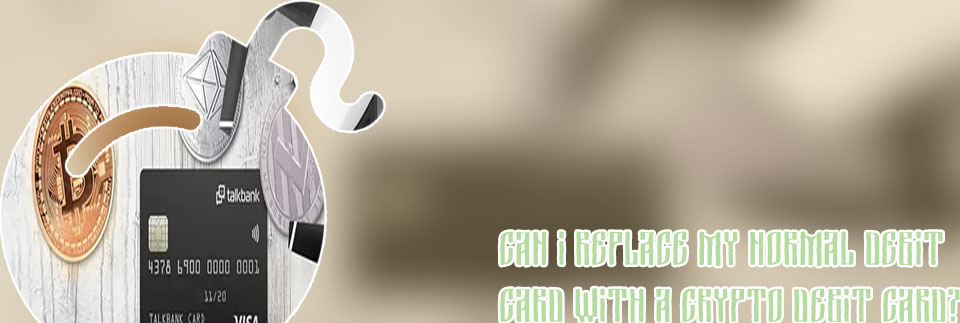Cryptocurrency has become increasingly popular in recent years, and with that comes the need for convenient ways to utilize these digital assets in everyday life. One solution to this is the use of crypto cards, which allow users to easily spend their cryptocurrency at various retailers and online platforms. In order to better understand how crypto cards work and their potential benefits, here are four articles that delve into different aspects of this emerging payment technology:
The Top Crypto Cards of 2021: A Comprehensive Review

In the fast-evolving world of cryptocurrency, crypto cards have become an essential tool for enthusiasts and investors alike. These cards allow users to easily convert their digital assets into traditional fiat currencies for everyday transactions. With numerous options available in the market, it can be overwhelming to choose the right one. That's why we have compiled a comprehensive review of the top crypto cards of 2021 to help you make an informed decision.
One of the standout cards in our review is the "X Crypto Card". This card offers a seamless user experience with low fees and high security features. Users can easily link their existing crypto wallets to the card and make instant transactions at any location that accepts card payments. Additionally, the X Crypto Card offers attractive rewards and cashback incentives, making it a popular choice among users.
Another notable mention in our review is the "Y Crypto Card". This card stands out for its wide acceptance at both online and offline merchants, making it versatile for everyday use. With competitive exchange rates and no hidden fees, the Y Crypto Card is a cost-effective option for users looking to maximize the value of their digital assets.
Overall, the top crypto cards of 2021 offer a convenient and secure way to manage and spend cryptocurrencies in the real world. Whether you are a seasoned investor
How to Safely Use a Crypto Card: Tips and Best Practices
Cryptocurrency has been gaining popularity as a means of payment in recent years, and with the rise of crypto cards, using digital assets for everyday transactions has become even more convenient. However, it is crucial to follow best practices to ensure the safety of your funds when using a crypto card.
One key tip for safely using a crypto card is to keep your private keys secure. Private keys are essentially the passwords to your cryptocurrency holdings, and if they fall into the wrong hands, your funds could be at risk. It is recommended to store private keys offline in a secure location, such as a hardware wallet, to prevent unauthorized access.
Another important practice is to only use reputable crypto card providers. By choosing a trusted provider with a track record of security and customer satisfaction, you can minimize the risk of falling victim to scams or fraud.
A practical use case of safely using a crypto card is when making a large purchase online. By using a crypto card with strong security measures in place, such as two-factor authentication, a user can complete the transaction with peace of mind knowing that their funds are protected. This positive result can lead to increased trust in the crypto card provider and a seamless shopping experience for the user.
The Future of Crypto Cards: What to Expect in the Coming Years
Cryptocurrency has made waves in the financial world in recent years, with many people embracing this new form of digital currency. One of the latest innovations in the crypto space is the emergence of crypto cards, which allow users to spend their digital assets just like traditional money. But what does the future hold for these crypto cards?
As we look ahead to the coming years, it is clear that crypto cards will continue to grow in popularity and functionality. With major players like Visa and Mastercard already getting involved in the crypto space, it is likely that we will see even more widespread adoption of these cards in the near future. In fact, some experts predict that crypto cards could eventually replace traditional bank cards for everyday transactions.
Moreover, the evolution of blockchain technology will also play a significant role in shaping the future of crypto cards. As blockchain becomes more advanced and secure, we can expect to see even more innovative features and capabilities integrated into these cards. This could include things like instant conversions between different cryptocurrencies, enhanced security features, and even the ability to earn rewards in the form of crypto.
Overall, the future of crypto cards looks bright, with exciting developments on the horizon. Whether you are a seasoned cryptocurrency investor or just curious about this new form of digital money, keeping an eye on the latest
Crypto vs Traditional Cards: A Comparison of Benefits and Drawbacks
In today's increasingly digital world, the debate between cryptocurrency and traditional debit/credit cards continues to gain momentum. Both forms of payment have their own set of benefits and drawbacks, making it important for consumers to weigh their options carefully.
Cryptocurrencies, such as Bitcoin and Ethereum, offer a decentralized and secure payment method that is not tied to any central authority. This can provide users with increased privacy and protection against fraud. Additionally, transactions can be completed quickly and with lower fees compared to traditional cards. However, the volatile nature of cryptocurrencies can lead to price fluctuations, which may affect the value of one's assets.
On the other hand, traditional cards offer widespread acceptance and familiarity, making them a convenient choice for everyday transactions. They also provide users with additional perks such as rewards programs and purchase protection. However, users may be subject to higher fees and longer processing times compared to crypto transactions.
Ultimately, the choice between crypto and traditional cards will depend on individual preferences and needs. While cryptocurrencies offer innovative solutions and security features, traditional cards remain a reliable and widely-accepted form of payment. By understanding the benefits and drawbacks of each option, consumers can make informed decisions that align with their financial goals and priorities.
